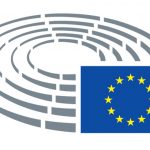
Trademarks, their utility and protection
Nike, Zara, Adidas, Estrella Galicia… No matter how we may see or read these words, we directly associate their particular symbol or logo with certain products or services, which also represent a specific level of quality, which can evoke particular sensations and emotions, and this is the true power of brands: to allow us to identify a type of business, which generates certain products and/or services, and thus consumers can differentiate them from others.
In other words, the brand fulfils, within the market, the function of indicating the business origin of particular products, such as a telephone, or particular services, such as those offered by a particular hotel chain. But what can a trademark be?
In general, and as an international standard established by the Agreement on Trade-Related Aspects of Intellectual Property Rights (TRIPS), signed in 1994, words, names, logos, letters or any other distinctive element such as the shape of the product may be registered as trademarks.
Trademarks can be divided into individual, collective and certification marks, depending on whether they are associated with a collective or not, as well as whether they are used to confirm a particular set of characteristics. Similarly, the types of marks that can be registered are:
- Denominative
- Figurative
- Shape
- Position
- Pattern
- Colour
- Sound
- Movement
- Multimedia
- Hologram
Taking into account the importance that the brand offers within the market, especially nowadays due to the different media where it can be observed (it is no longer only visualized on the street or television, but now it is also applied to social networks, internet, and even the metaverse), the registration of brands has gained a vital strategic importance, since it increases the positioning of the company, as well as ensuring its protection in the market.
However, this protection, in general, does not arise automatically (without prejudice to the protection of notorious unregistered trademarks), but it is necessary to register them in order for protection to begin, and also to be able, on the one hand, to prohibit others from using our specific trademark without authorisation, as well as to be able to oppose other trademark registrations that may entail a risk of confusion with our own.
This registration can be achieved at different levels: at the national level, by registering the trademark with the office of a specific country, such as, for example, the Spanish Patent and Trademark Office (OEPM); at the regional level, although this is not so common, but for example, as in the European Union, with the European Intellectual Property Office (EUIPO), obtaining protection, with a single registration, in all the member countries of the EU; or at the international level, through the World Intellectual Property Office (WIPO), where we can apply, with a prior registration or an application at a national or regional office, for trademark protection in all the signatory states of the Madrid Protocol.
The latter type of registration would allow us to simultaneously apply for registration in any of the signatory states of the Protocol. However, the protection conferred will be that which exists in accordance with the regulations of each state, unlike what happens, for example, with registration in the EUIPO, which has a single regulation applicable to all EU member states.
There are a series of requirements, as well as recommendations, that a trademark must meet if it is to be eligible for registration with the offices, namely:
- Distinctive character: the trademark to be registered cannot consist solely of generic terms, nor can it consist solely of terms that are purely descriptive of the goods or services for which it is to be registered. For example, MANGO could not be registered for the protection of the type of fruit, but it is very powerful for the protection of clothing, due to its high level of fantasy in this sector.
- Not be contrary to public policy (e.g. COVIDIOT was recently refused registration for this reason) or involve flags and/or state elements.
Once we have obtained the registration of a trademark after passing the examination of the office and fulfilling the established requirements, we will obtain protection for 10 years, which we can renew for further periods of 10 years as long as we carry out the necessary renewals and pay the fees of each office.
At Letslaw we are experts in protecting trademarks against unauthorised use, defending them against possible opposition to their registration, as well as defining their scope of protection and processing their registration at the relevant offices, so we can advise you on everything you may require in this regard.

IP/IT lawyer.







